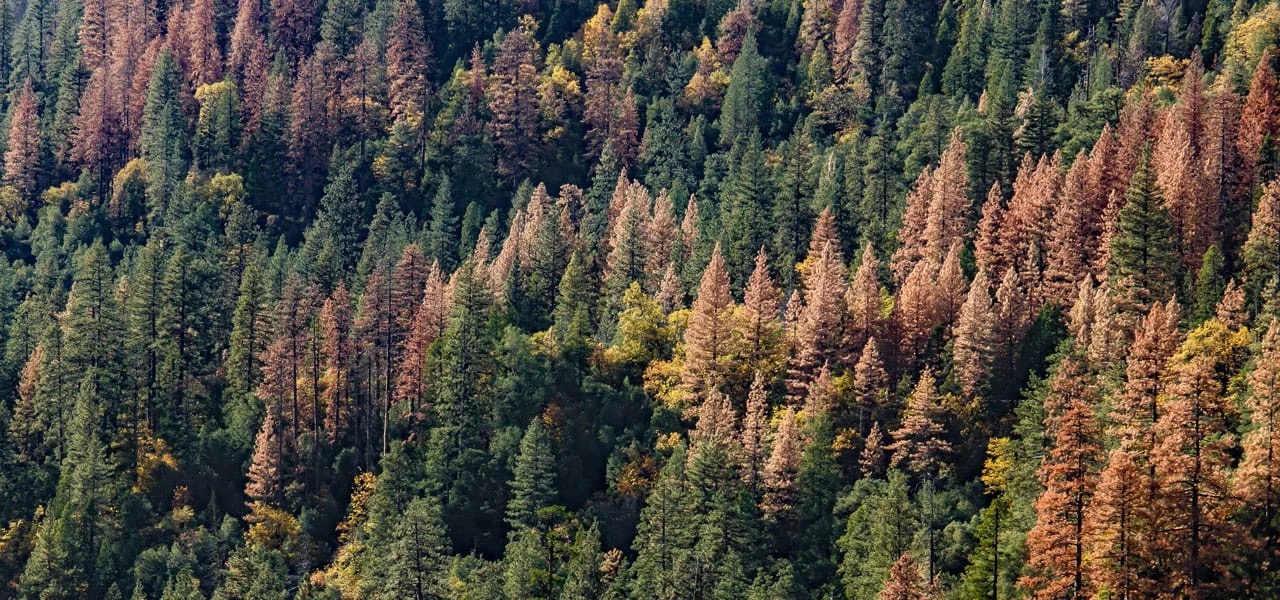Recently, there was a small grass fire north of Evergreen.
Thankfully, this fire was quickly contained but still prompted evacuation and pre-evacuation orders.
Grasses can be a ladder fuel for wildfires, yet we still encourage planting and maintaining some native grasses.
This article will review how you can have grasses on your property while still being fire-wise.

Don’t plant grasses near buildings or other structures.
Create and Maintain your Defensible Space
What you want to avoid doing when it comes to using grasses in your Colorado landscape is to have a large area of dried, tall grass near your home or other building. Tall grasses, especially when dry, will quickly carry fire to your house. Grasses catch on fire quickly and burn rapidly.
Therefore, planting grasses or other fuel near a building should not be done.
Instead, create a defensible space around the buildings, which considers the zones. The closer to the building, the more defensible the area needs to be. There should be a non-flammable barrier within the first five feet of the structure. This could be rock, bare dirt, concrete, or flagstone. This is known as the home ignition zone or HIZ. Rather than tall grasses, keep any grass (or other fine plants) in zone 1 mowed close to the ground.
Water Grasses When Needed
When grasses are growing and green, they are not much of a concern regarding fire danger. Keep your grasses well-watered during the summer months, especially during periods of drought.
Consider Other Risks
When grasses dry out, you can mow or cut them down to prevent them from becoming a ladder fuel.
If there are shrubs or tree branches near tall grasses, have the trees and shrubs professionally pruned. Pruning lower branches prevents fire from jumping from grasses to the shrubs or trees.
It’s a good idea to plant grasses separately from trees, shrubs, or anything else that can catch fire.
When you plant grasses, trees, and other plants, try to space them apart. The space between plants will give the plants room to grow and prevent fire from leaping from one plant to the next.

From left to right: cheatgrass, quackgrass, bulbous bluegrass, Johnsongrass, and wild-proso millet. All are grasses that are considered noxious weeds in Colorado and should be removed from your property.
Remove Noxious Weeds
If you have any grasses that are considered noxious weeds on your property, they should be removed immediately.
Below is a list of some of Colorado’s grasses considered noxious weeds. Noxious weeds and non-native invasive plants that easily spread, can sometimes cause harm to livestock or other plants, and, according to the Colorado Department of Agriculture, “pose an increased threat to communities from wildfire.”
- Cheatgrass or Downy brome (Bromus tectorum)
- Quackgrass (Elymus repens)
- Jointed Goatgrass (Aegilops cylindrica)
- Bulbous Bluegrass (Poa bulbosa)
- Johnsongrass (Sorghum halepense)
- Wild-Proso Millet (Panicum miliaceum)
- Caucasian Bluestem (Bothriochloa bladhii)
- Tall Oatgrass (Arrhenatherum elatius)
- Ventenata Grass (Ventenata dubia)
- Yellow Bluestem (Bothriochloa ischaemum)
- Yellow Mignonette (Reseda lutea)
To view all the current noxious weeds in Colorado, click here.

Junegrass, Indian rice grass, and little bluestem are three types of grass native to Colorado.
Plant Native Grasses
Once you understand the different zones around your buildings and have removed grasses that are noxious weeds, consider which grasses would work on your property. We always recommend planting native when possible.
According to the Colorado State University Extension, these native grasses work well in high altitudes in Colorado:
- Indian Rice Grass ‘Nezpar’ or “Paloma’ (Achnatherum hymenoides)
- Blue Grama or Eyelash Grass (Bouteloua gracilis) – State Grass of Colorado
- Western Wheatgrass (Pascopyrum smithii)
- Arizona Fescue (Festuca arizonica)
- Junegrass (Koeleria macrantha)
- Little Bluestem (Schizachyrium scoparium)
Master Gardener from the Colorado State University Extension also has a document on some native grasses to use in Colorado Landscapes. Before determining whether the grass would work on your property, note the planting elevation.

Consult With Experts
Every property has different growing conditions, microclimates, and fire risks. Before making any large change to your landscape, we suggest consulting with professionals who understand how to grow native plants, trees, and grasses on your property while remaining fire-wise.
LAM Tree Service has been helping Colorado property owners make their land a defensible space for years while allowing native trees and plants to thrive.
Contact our office for more information. You can also check out this additional information on our website:



